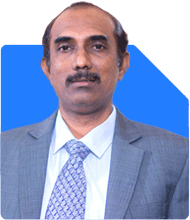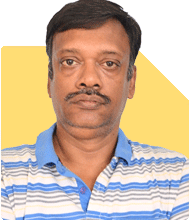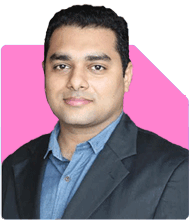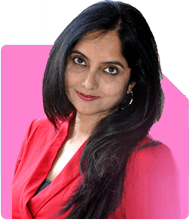Hello Sir,
My Age is 31 From This Month, I started my SIP Details r as below
1). SBI Small Cap Fund Direct Growth 2K
2).Tata Small Cap Fund Direct Growth 2k
3).HDFC Health Care and Pharma Fund Direct Growth 2k
4). Motilal Oswal Midcap Fund Direct Growth 3L. Lumsum (One Time Investment)
Above listed my investment is Good Or Required any Changes,
kindly suggest I want to build my corpus 2 cr in another 15 year & how much I have to invest more to achieve Target.
From- Gangadhar C.
Ans: At 31, you have plenty of time to grow your wealth, and it’s good to see that you’ve already started investing. You have specific goals, and it’s crucial to evaluate your investments and align them with your long-term objectives.
Let’s assess your current investments, their potential, and what adjustments may be required to achieve your goal of building a Rs 2 crore corpus in the next 15 years.
Overview of Your Current Investments
You’ve made investments in the following areas:
SBI Small Cap Fund (SIP of Rs 2,000)
Tata Small Cap Fund (SIP of Rs 2,000)
HDFC Health Care and Pharma Fund (SIP of Rs 2,000)
Motilal Oswal Midcap Fund (Lump sum of Rs 3 lakhs)
Let’s break down each category to see how it fits into your overall financial plan.
Analysis of Your Investments
Small Cap Funds (SBI and Tata): Small cap funds can offer high returns but also come with higher risk. They can be volatile in the short term but have the potential to deliver strong growth over a long period. You’ve allocated Rs 4,000 per month in small cap funds, which is a fairly aggressive strategy.
Sectoral Fund (HDFC Health Care and Pharma): Sectoral funds focus on specific industries and are much riskier than diversified funds. Healthcare and pharma can perform well during certain cycles, but they may underperform in others. It’s important not to overexpose yourself to one sector, as it can reduce diversification.
Midcap Fund (Motilal Oswal Midcap, Rs 3 lakh lump sum): Midcap funds are typically less risky than small cap funds and can provide a balance of growth and stability. Your lump sum investment in midcap funds adds a layer of diversification to your portfolio. It’s a good choice, but let’s see if your overall allocation aligns with your goal.
Suggestions for Improvements
Your current portfolio is focused heavily on small caps and a sectoral fund. While these investments can offer good returns, they come with high risks, especially when overexposed to volatile segments like small caps and sectoral funds. Let’s consider some improvements.
1. Reduce Exposure to Small Cap Funds
You have Rs 4,000 invested in small cap funds. While small caps have growth potential, they are more prone to market fluctuations. A small cap-heavy portfolio can be risky, especially when aiming for long-term stability.
Suggestion: Consider reducing your allocation to small cap funds to balance your risk. You could diversify into more stable options like flexi-cap or large-cap funds. These funds invest in companies across various market capitalisations, offering more stability while still providing growth opportunities.
2. Diversify Away from Sectoral Funds
Sectoral funds, like the HDFC Health Care and Pharma Fund, carry concentrated risk as they depend on the performance of a single sector. While the healthcare sector has potential, it may not always perform consistently over the long term.
Suggestion: Instead of investing Rs 2,000 monthly in a sectoral fund, consider moving some of this money to a diversified equity fund that invests across sectors. This will reduce your risk and give you more balanced exposure to the overall market.
3. Continue with Midcap Fund but Stay Balanced
Your one-time investment of Rs 3 lakhs in the Motilal Oswal Midcap Fund provides a good balance between growth and risk. Midcap funds tend to perform well over the long term but are also less volatile than small cap funds.
Suggestion: Keep this midcap investment intact, but make sure you monitor its performance and adjust it if needed. Avoid making additional lump sum investments into the same fund, as it’s essential to maintain diversification.
Building a Rs 2 Crore Corpus in 15 Years
To achieve your target of Rs 2 crore in 15 years, you need to assess if your current investments will grow at a pace that will help you reach this goal. While small caps and midcaps can deliver good returns, relying heavily on them may not provide the required stability over the long term.
Estimated Additional Investment Required
Based on a reasonable rate of return for a balanced portfolio, you will need to invest more than your current Rs 6,000 SIP. Considering the Rs 3 lakh lump sum you’ve invested, you may need to increase your SIP by another Rs 7,000 to Rs 10,000 per month, depending on how much risk you’re willing to take and the potential returns.
If you increase your SIP by Rs 8,000 to Rs 10,000 and invest consistently in a balanced portfolio, you will have a better chance of reaching your goal of Rs 2 crore in 15 years.
Asset Allocation and Diversification Strategy
To build a robust portfolio, diversification is key. Here’s a suggested allocation to achieve your financial goals while managing risk effectively:
Large Cap Funds (40%): Large-cap funds provide stability and steady growth. They invest in established companies with lower volatility compared to mid and small cap funds. Allocating a portion of your funds to large caps will ensure stability in your portfolio.
Midcap Funds (30%): Midcap funds offer higher returns than large caps, but with more risk. Your Rs 3 lakh investment in the Motilal Oswal Midcap Fund is already in place, which is a good starting point.
Flexi-cap Funds (20%): Flexi-cap funds offer flexibility by investing in companies across market caps. They balance growth and risk and are a good option for long-term growth.
Small Cap Funds (10%): Keep a small allocation to small caps as they can deliver high returns. However, reduce your SIP contribution to small caps from Rs 4,000 to around Rs 2,000 per month to limit exposure to risk.
Why Actively Managed Funds Are Better Than Index Funds
Index funds follow the market passively and may not provide downside protection during market downturns. Actively managed funds, on the other hand, have the potential to outperform the market, as fund managers can make adjustments based on market conditions. They also offer better risk management, which is crucial for long-term wealth creation.
Disadvantages of Direct Plans
Direct mutual fund plans do not offer the guidance and expertise of a Certified Financial Planner (CFP). Investing through a CFP allows you to get professional advice and ongoing portfolio management. A regular plan with the assistance of a CFP ensures that your investments are aligned with your financial goals, and any necessary adjustments are made over time. The slight extra cost of regular plans is worth the expert guidance you receive.
Tax Implications
Equity Mutual Funds: Long-term capital gains (LTCG) above Rs 1.25 lakh are taxed at 12.5%, and short-term capital gains (STCG) are taxed at 20%. Keep these tax rules in mind while planning your withdrawals.
Final Insights
Diversify Your Portfolio: Move away from sectoral and small-cap-heavy investments. Increase exposure to large-cap and flexi-cap funds for better balance.
Increase Your SIP: To achieve your Rs 2 crore goal, you need to increase your SIP by at least Rs 8,000 to Rs 10,000 per month.
Monitor Your Portfolio: Review your investments regularly with the help of a Certified Financial Planner (CFP). This will ensure that your portfolio remains aligned with your financial goals.
Avoid Direct Plans: Continue investing through a CFP to benefit from professional advice and portfolio management.
Tax Planning: Be mindful of the tax implications of your investments to optimise your returns and minimise taxes.
By making these adjustments, you’ll be in a strong position to reach your goal of Rs 2 crore in 15 years.
Best Regards,
K. Ramalingam, MBA, CFP,
Chief Financial Planner,
www.holisticinvestment.in
https://www.youtube.com/@HolisticInvestment



























